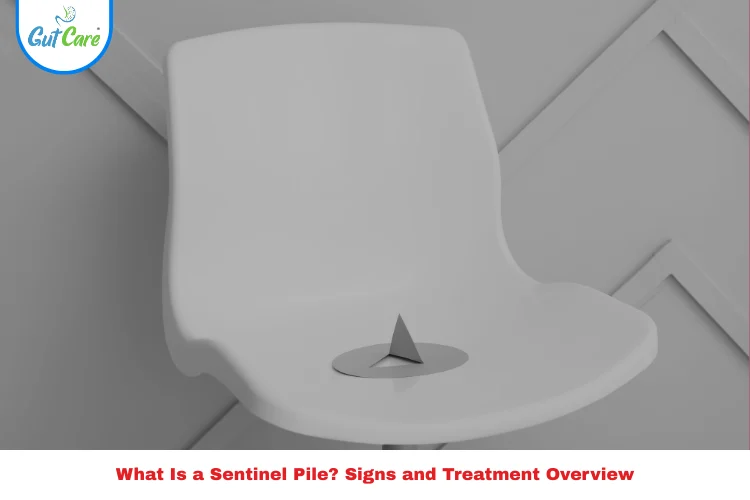Ever found a small, stubborn lump near your butt after a rough bathroom trip?
Yeah, not the easiest thing to bring up, but if that sounds familiar, you might be dealing with something called a sentinel pile. Weird name, right? It sounds like something out of a sci-fi movie, but it’s actually pretty common—and usually points to an anal fissure, which is just a small tear in the skin around your anus.
Now, before you panic, this isn’t something super dangerous. But it is your body’s way of saying, “Hey, something’s not healing right down here,” and it’s worth paying attention to.
Sentinel pile meaning
Basically, a sentinel pile is a small lump—kind of like a skin tag—that shows up right by the anal opening. But it’s not random. It usually pops up in response to a chronic fissure that just won’t heal. Unlike hemorrhoids (which are swollen veins), this lump is made of firm tissue that forms over time as your body tries to protect the area.
Think of it like your skin trying to “guard” a wound that never fully closed up. That’s where the name “sentinel” comes from—it’s kind of standing watch over the trouble spot.
What are the symptoms of a sentinel pile?
If you’ve got one, chances are you’ll notice a few things:
- A small bump or flap of skin near the anus
- Sharp pain when you poop (and even after)
- A burning or irritated feeling back there
- Light bleeding sometimes, especially with hard stools
- Itching or trouble keeping the area clean
How bad it feels usually depends on how long the fissure’s been around and how your body reacts.
Sentinel pile causes
Sentinel piles don’t just show up out of nowhere. They usually form because of a fissure that isn’t healing. That can happen for a bunch of reasons, including:
- Constant straining when you go to the bathroom (hello, constipation)
- Chronic diarrhea
- Trauma from wiping too hard or passing a huge stool
- Giving birth, especially vaginal deliveries
- Inflammatory bowel diseases like Crohn’s or ulcerative colitis
When a fissure hangs around too long, your body tries to “defend” it—hence, the pile.
Sentinel pile vs hemorrhoid
Though they may appear similar, sentinel piles and hemorrhoids are distinctly different both in structure and cause. Here’s how you can tell them apart:
| Feature | Sentinel Pile | Hemorrhoid |
| Nature | Skin tag formed due to chronic fissure | Swollen, inflamed blood vessels |
| Cause | Chronic tearing in the anal lining | Increased pressure from straining or pregnancy |
| Pain | Often painful due to active fissure | May be painless or painful depending on type |
| Bleeding | Less common unless fissure bleeds | Common, especially with internal hemorrhoids |
| Appearance | Firm, tag-like, fixed near fissure | Soft, swollen, may be internal or external |
| Treatment Approach | Focused on healing the fissure | Creams, dietary changes, or minor surgery |
This comparison is crucial for proper diagnosis, as treatments vary significantly between the two.
Is sentinel pile harmful?
Not really. A sentinel pile isn’t cancerous, contagious, or harmful on its own. Plenty of people have them and never even realize. But here’s the catch: it usually means you’ve got an anal fissure that’s not healing properly. Ignoring it can lead to ongoing pain or infection. So while the lump itself isn’t dangerous, what it represents could be.
Do sentinel piles need to be removed?
Not always. Doctors usually try to treat the fissure first. But removal might be on the table if:
- The pain won’t let up
- It’s hard to clean the area properly
- It gets in the way during physical activity or sex
- It’s just not going away, even after treating the fissure
If it comes to surgery, it’s typically a minor procedure with local anesthesia and a pretty quick recovery.
Sentinel pile treatment
Fixing a sentinel pile usually means focusing on what’s causing it—the fissure. Here’s what that can look like:
- Warm sitz baths – Basically just sitting in warm water for 10–15 minutes to soothe the area and help it relax
- Prescription creams – Stuff like nitroglycerin or calcium channel blockers that boost blood flow and help healing
- Fiber & water – More fiber = softer stools = less strain
- Stool softeners – Super helpful if you’re dealing with constipation
- OTC pain relief – Just to keep you comfortable
- Botox injections – Sometimes used to relax the anal muscle and give the fissure a chance to heal
- Surgery – As a last resort, surgery like a sphincterotomy or pile removal might be needed
Start early, treat it right, and in most cases, it clears up without needing anything too drastic.
Conclusion
A sentinel pile might seem like a minor annoyance, but it’s your body’s way of waving a little red flag. It’s not dangerous by itself, but it is a sign that something deeper (literally) might need attention—usually a fissure that’s overstayed its welcome.
Don’t just ignore it and hope it’ll go away. With the right care—whether it’s sitz baths, meds, or in some cases, a simple surgery—you can feel way more comfortable and avoid long-term issues. If things aren’t improving, it’s worth checking in with a colorectal specialist.
FAQs
1. What is a sentinel pile and how is it different from a hemorrhoid?
A sentinel pile is a skin tag that forms near the anal opening, usually as a result of a chronic anal fissure. Unlike hemorrhoids, which are swollen blood vessels, a sentinel pile is a fibrotic tissue lump that does not bleed but may cause discomfort.
2. Can a sentinel pile heal on its own?
In some cases, a sentinel pile may shrink if the underlying anal fissure heals completely. However, chronic cases might require medical intervention, especially if pain or hygiene issues persist.
3. Is surgery necessary to remove a sentinel pile?
Surgery is not always needed. Many patients find relief through conservative treatments such as sitz baths, topical ointments, and dietary changes. Surgical removal is considered when symptoms persist or worsen despite non-surgical methods.
4. Are sentinel piles dangerous or cancerous?
No, sentinel piles are benign and not cancerous. However, they are indicators of chronic anal fissures and should be evaluated by a specialist to prevent further complications.
5. What is the best way to prevent sentinel piles?
Preventing constipation and maintaining soft stools are key. A fiber-rich diet, plenty of water, proper anal hygiene, and avoiding straining during bowel movements can reduce your risk of developing fissures and sentinel piles.




